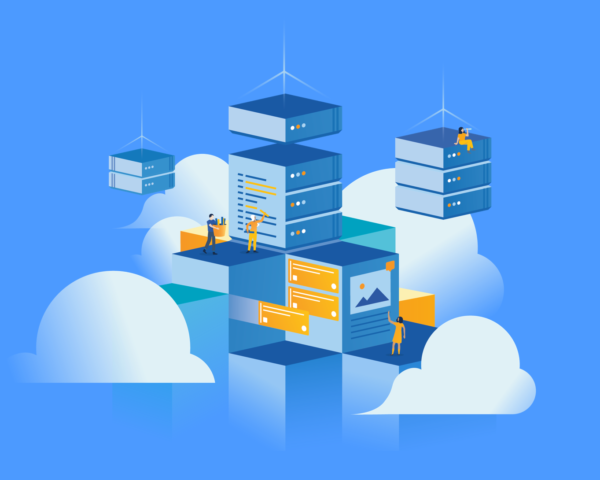While it can be challenging in itself making the decision to upgrade your instance(s) to Data Center, more tangible concerns start to pile up when considering the overall process of migrating; concern that it will drag on longer than planned, or that there will be issues with consolidating your instances or migrating your apps. Above all, however, the part of a migration that keeps admins up at night is the uncertainty of it all, whether that’s not knowing if you missed setting a critical parameter in preparation or wondering if you could have cleaned up your instance better for more efficient data migration. The ideal outcome of moving to Data Center is a smooth and uninterrupted user experience, along with seamless access to enterprise-grade functionality, and most fears stem from the possibility that this anticipated outcome won’t be met in some way.
A move to Data Center is a significant undertaking that can have huge implications on ROI and the way your teams work, but with the right planning, guidance, and execution, migrating your Atlassian instances can (and should) be viewed as an exciting next step in your enterprise journey. It marks the moment your products and infrastructure advance to a place where they’re better suited to fit your teams’ needs. Below, we’ve compiled (and debunked) a few of the more common concerns about upgrading to Data Center to prove that it’s not as scary as you might think it is.
Not all Data Center migrations are created equal
When considering a migration to Data Center, often the first thing that comes to mind is the inevitable downtime that will need to occur. One thing to keep in mind is that not all migrations to Data Center require the same amount of work (or downtime, for that matter).
For many enterprise customers, high availability is simply not a priority. Instead, they need to make sure they comply with new security regulations, have support for the leading authentication and authorization protocols, or secure improved performance for their distributed teams. If these sound like the reasons you’re considering a move to Data Center – at least more so than the benefits of a clustered environment – then we have good news. With the ability to deploy Data Center in a non-clustered environment, migrating your instance is a breeze.
Deploying Data Center in a non-clustered environment means that you can run Data Center with the exact same infrastructure you’re currently using in server. All that’s required of you is to populate your new license key, and boom – you’re upgraded in two minutes or less. It also means zero downtime, which helps you achieve that seamless experience we mentioned earlier.
When it comes to infrastructure, you have options
Oftentimes, customers fear that once they migrate to Data Center, they’ll be stuck with their existing, on-prem hardware to run their new Data Center instance(s), but this simply isn’t the case. The truth is that Data Center supports flexible deployment, meaning it’s up to you whether you use physical hardware or a public cloud offering like AWS or Microsoft Azure. If your preference is the former, no sweat. And if your preference is the latter and you’re looking to modernize, that’s cool too. The bottom line is that it’s your deployment, and your choice.
Digging a little deeper into deploying on a public cloud offering: we now support Kubernetes (K8’s). K8s is an orchestration framework, which enables you to manage and run container images from a centralized location. With our new helm charts, you can deploy your Data Center products on a K8 cluster and host it either on your own hardware or a cloud provider.
Migrating to Data Center doesn’t need to be a cost conversation
Just as cost plays a big role in the decision to migrate to Data Center, it’s a big consideration for the migration itself. Migrations sometimes take longer than planned; your resources could get stretched further than anticipated, leaving them unable to fulfill their day-to-day responsibilities; the list goes on and on. The biggest reason a smooth migration is an ideal migration is that the smoother it goes, the less costly it will be.
Well, there’s no better way to ensure a smooth migration than putting together a thorough plan that checks all the boxes. From assembling the right team and roles to establishing a realistic timeline, getting started early with your plan will pay dividends once your migration is completed swiftly and successfully.
A big part of planning is reviewing your current instance to understand if there are ways to optimize during the migration. Consider the following:
- Document your current processes and audit your current apps
- Upgrade to the latest LTS release
- Evaluate the size of your instance and consider its rate of growth so you can scale accordingly
- Benchmark your server instance’s existing functionality and performance
- Take the time to identify and correct any suboptimal configurations
- Assess and update governance
Putting a detailed plan in place will do wonders for ensuring a smooth and cost-efficient migration, and there are a number of pages in our documentation that can help provide additional recommendations.
Start putting a plan in place
There’s no time like the present to start putting a plan together for an effective migration. For further detail on a number of the recommendations discussed above, be sure to follow our Data Center migration guides. If you want to learn more about migration best practices, click below to register for our upcoming webinar.


